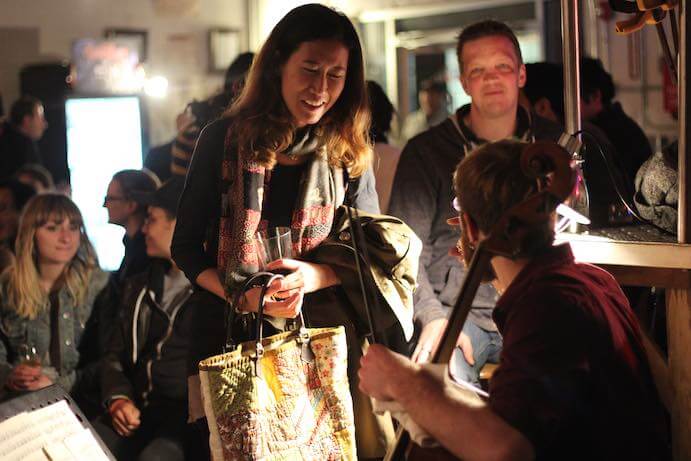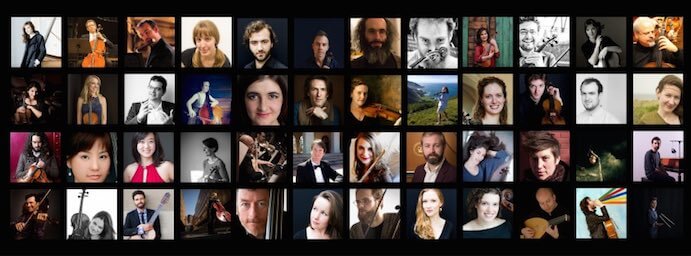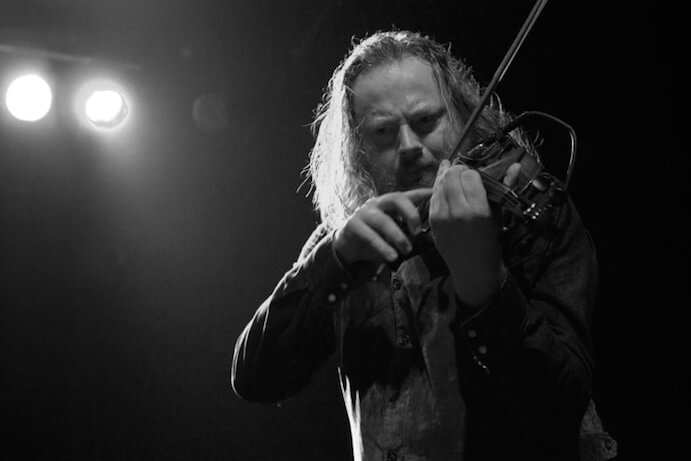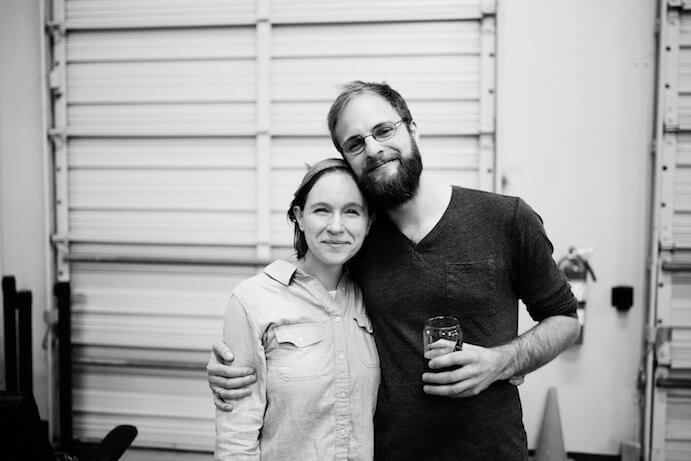Steuart and Michelle Pincombe have created an orchestra of sorts.
But they won’t ever convene these players in a concert hall to play a common program. This collection of musicians was made to be scattered.
They carry with them the old-time religion of classical music and a new mindset. Rather than adhere to the “If we play it, hopefully they will come” mantra repeated within some cathedrals of sound, these artists are going where the people are — into breweries, cafes, galleries and homes.
Their exodus represents the second phase of an experiment that began with the Pincombes, a 1959 trailer, and some cello repertoire. They called their tour “Music In Familiar Spaces;” as they went, with Steuart playing more than 60 pay-what-you-will concerts across the United States, the couple started sketching a roadmap so other artists might do the same. Now in its first year, the Music in Familiar Spaces Artist Collective is about 50 musicians strong; these performers will go out, packing their skills and the Pincombes’ earned knowledge, hoping to reinvigorate the relationship between classical artists and contemporary audiences.
The Pincombes’ initial trek, stretched across 2015 and 2016, was born of marital and musical necessity. Steuart’s globe-hopping career as a cellist often kept the couple apart; it also caused its fair share of burnout. Roaming across America provided a chance to work together–and test drive an idea. The couple hoped to find something more than the traditional, often distant relationship between performer and listener, or classical music’s cultural significance and daily life.
Michelle booked venues and Steuart performed intimate, conversational programs. They wanted to prove that classical music could, in fact, be everyday music. And the Pincombes wanted to draw audiences into a community that would last long after they left town, helping listeners see hometown venues in a different light or even experience them for the first time. Gradually the Pincombes knew they were onto something. Once listeners realized it was OK to approach Steuart, meaningful exchanges took place.
They also saw audiences that were younger than in many classical settings. “It was quite obvious what the difference was,” Michelle said. The difference in her husband was quite obvious too — “I saw him sort of come back to life,” she added. The exhaustion and expectation that accompanied a life in classical music began to melt away. There was something refreshing about the closeness and connection he was making with listeners.
Steuart acknowledged an internal change with external implications. Often he had experienced a sense of anxiety before performing, much of it owed to his own perfectionism. Finding the sweet spot between reverent performance and informal posture made all the difference. “That gradually has been shed from those experiences in a pretty powerful way,” he said, noting that even his return to more conventional settings has become less fraught.
Steuart relishes the chance to create in community and had yearned to form some sort of collective. But he wasn’t sure what shape that notion should take or what he had to offer. The tour provided an answer. As the couple crossed a literal frontier, traveling west, Steuart sensed the crossing of another. “Now I have the momentum that I can hand to these performers,” he remembered thinking.

Music in Familiar Spaces on tour
A sort of crescendo was indeed being heard. Michelle began fielding questions from artists they met on the road as well as emails from performers who were learning about the couple’s successes. The Pincombes decided they had something worth sharing.
In its first year, the collective is primarily made up of musicians the couple already know; there is a sizable wait list for year two, Steuart said. The Pincombes have worked to connect performers and venues; have shared an extensive email list with artists; done much of the heavy promotional lifting, creating templates and tools; and shared program ideas with artists. Artists commit to performing three concerts under the Music in Familiar Spaces umbrella; cultivating a new relationship with at least one venue; and sharing any contact information they gather. Performers are expected to participate for at least a year.
The Pincombes hope such a model can transform the performer-listener relationship. “I want to pull people into the fullness of that meaningful experience. … Something that makes people pause and think, and then go out and be affected by it in a good way,” Steuart said.

The Music in Familiar Spaces Collective
They also hope it brings a level of sustainability to the musical life. There is a shrinking middle class in classical music, Michelle acknowledged, a widening gap between elite musicians and those hustling to maintain a freelance career. A tour like this offers a different set of options and prospects.
As much as an artist can profit creatively and personally, certain sacrifices must be made. “The artist needs to check a lot of expectations at the door in terms of what a classical music concert is, and what it is to play a classical music concert,” Michelle said. Elements such as pristine acoustics, proper concert etiquette and prestige must be held loosely. But the Pincombes believe the scale is clearly tipped in artists’ favor.
Edwin Huizinga is an artist after the Pincombes’ own hearts. While the couple’s model might stretch some, for him it is a logical next step. The Canadian violinist has played traditional venues and material; he also has engaged with folk, rock, jazz and Celtic music. With the group Classical Revolution, he chased orthodox sounds into the sort of ordinary venues the Pincombes embrace. Over the course of his career, he has sight-read string quartets at a San Francisco bar and played a house concert in a rural, straw-bale residence in New Zealand. The match of his motivation was struck while studying at Oberlin. He saw little interaction between college and conservatory students and laid himself down as a musical bridge between the two.
On one hand, Huizinga is fully engaged in every performance. Yet entering communal spaces catalyzes a special energy. “I get this desire to draw people in even more than normal almost,” he said. “In a concert setting, we sort of get handed a silver platter in a way.”

Edwin Huizinga
In an age of hand-wringing about the future of classical music, the Pincombes don’t see their model as the answer to the many questions in the atmosphere. They do, however, see it as part of the answer. Steuart stressed that Music in Familiar Spaces isn’t trying to step in and fix that which isn’t broken. Nor is it meant to be a finger in the face of institutions. “I don’t want to step on any toes. I want to wake people up. But I want to wake the right people up,” he said.
He hopes to create reciprocity with Music in Familiar Spaces artists learning and carrying lessons back with them into more traditional gigs. Huizinga voiced his belief that more music is being made at a given time, whatever the venue, the better for all musicians.
The Pincombes share this “the more, the merrier” approach. Their vision is of recharged musicians meeting audiences on their own turf, sharing life and a few songs, then taking that sort of energy wherever else they go.























